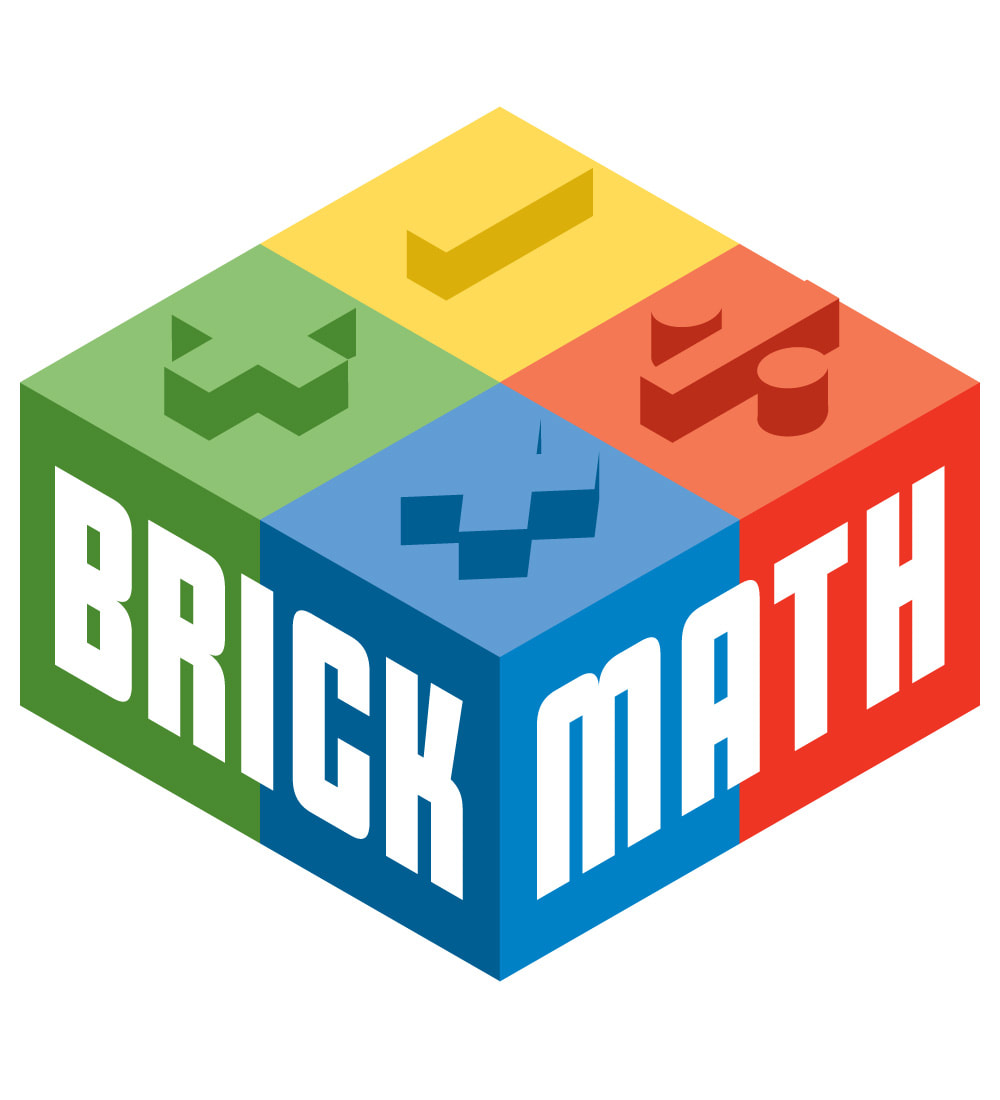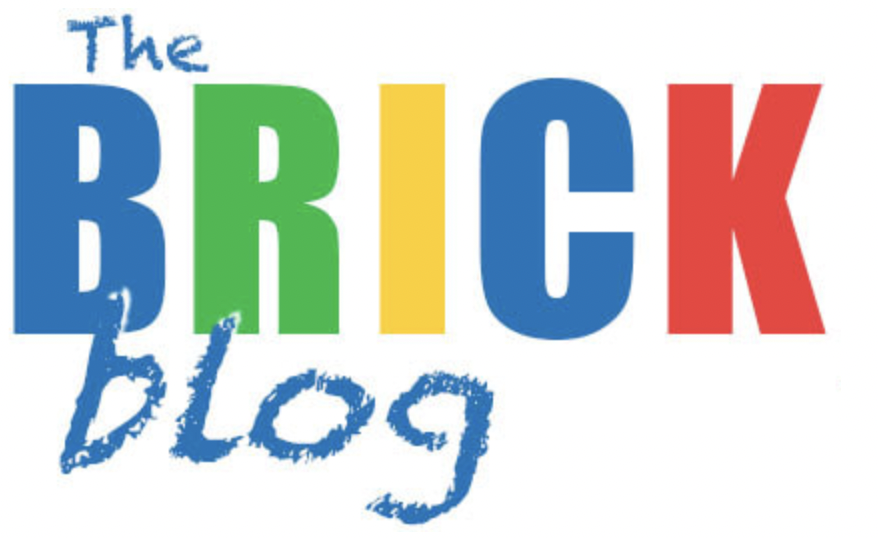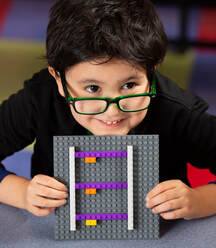 Happy summer to everyone! It's been a looooong school year for teachers, students, and parents—not one we hope to repeat again! Here's a new Brick Math Lesson of the Month for you to try. We think the Brick Math program will be especially helpful in the upcoming school year for kids who have lost some math skills during the pandemic year. 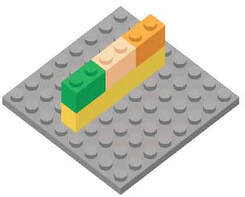 The Brick Math Lesson of the Month for July 2021 is on Division Basics. It's a great way to introduce the concept of division to a student. The lesson uses LEGO bricks to model three basic division problems: 4 ÷ 2 = 2; 8 ÷ 4 = 2; and 6 ÷ 3 = 2. When a student builds the problems with bricks and counts the studs on each brick, the idea of division is made simple to learn. To get the July 2021 Lesson of the Month, plus a new lesson each month, click here. The lesson is accompanied by a short video that illustrates the brick building process for each problem. Watch it before you teach the lesson to your student(s), or watch it along with your student(s)! 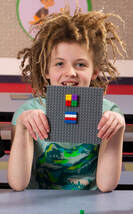 Brick Math is a K-6 math curriculum that uses LEGO® bricks to model 11 different math subjects: Counting, Addition, Subtraction, Multiplication, Division, Basic Fractions, Basic Measurement, Fraction Multiplication, Fraction Division, Advanced Measurement and Geometry, and Decimals. It works well for homeschooling, math intervention, enrichment, and as a whole-school program. Materials are simple and affordable. If you teach math or have a student at home who is learning math, check brickmath.com. The website includes videos for both teacher training and direct instruction of students. You can learn more about how Brick Math improves student math test scores and hear what people who are using Brick Math have to say about the program.
0 Comments
 Acclaimed science writer Annie Murphy Paul wrote about the tremendous value in solving problems using real, 3-D objects in the New York Times Sunday, June 13. It’s so applicable to Brick Math, we just had to quote a little of the article: “Three-dimensional space offers additional opportunities for offloading mental work and enhancing the brain’s powers. When we turn a problem to be solved into a physical object that we can interact with, we activate the robust spatial abilities that allow us to navigate through real-world landscapes. This suite of human strengths, honed over eons of evolution, is wasted when we sit still and think. “This holds true for a wide variety of problem types — including basic arithmetic, complex reasoning, planning and challenges that require creative insight. People who are permitted to manipulate concrete tokens representing elements of the problem to be solved bear less of a cognitive load and enjoy increased working memory. They learn more and are better able to transfer their learning to new situations. They are less likely to engage in symbol pushing, or moving numbers and words around in the absence of understanding. They are more motivated and engaged and experience less anxiety. They even arrive at correct answers more quickly.” [italics and boldface are ours] 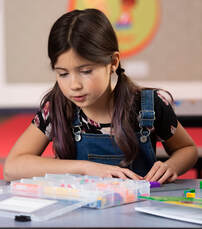 This is the essence of the Brick Math method. Students model K – 6th grade math problems using LEGO bricks, and in doing so, they activate their brains and really learn what the math means. Imagine building this brick model of dividing 24 by 6: 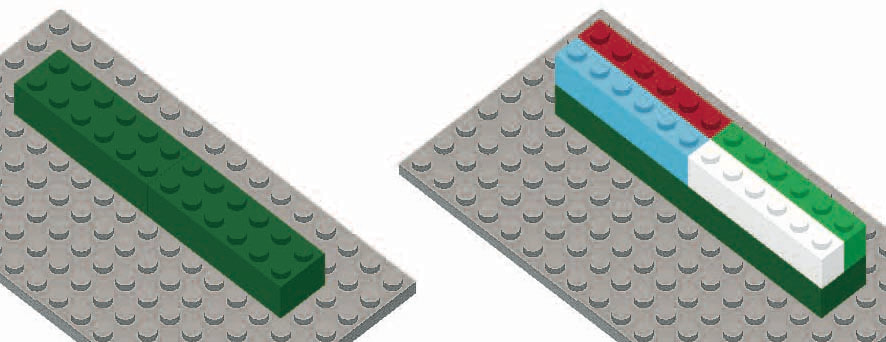 The brick model demonstrates the concept of dividing a set of 24 into 4 sets of 6. Using the 3-D bricks to model the problem helps a student, in the words of writer Paul, "navigate through real-world landscapes." Students put this another way: "I can SEE the math!" Later, the teacher introduces the number sentence 24 ÷ 6 = 4 so students learn how to write the problem using numerals. This problem is from Division Using LEGO® Bricks. Brick Math methods are based on learning theory from a number of leading experts. The program has been tested on students and shown to improve how well they learn math. Brick Math is a K-6 math curriculum that uses LEGO® bricks to model 11 different math subjects: Counting, Addition, Subtraction, Multiplication, Division, Basic Fractions, Basic Measurement, Fraction Multiplication, Fraction Division, Advanced Measurement and Geometry, and Decimals. It works well for homeschooling, math intervention, enrichment, and as a whole-school program. Materials are simple and affordable.
If you teach math or have a student at home who is learning math, check brickmath.com. The website includes videos for both teacher training and direct instruction of students. You can learn more about how Brick Math improves student math test scores and hear what people who are using Brick Math have to say about the program. 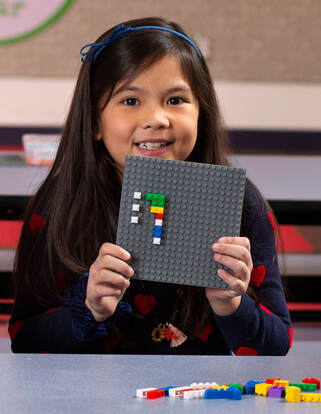 I recently had a customer tell me that her son didn’t understand the idea of factors until she tried Brick Math. When he saw the concept of factors made real with LEGO bricks, she said, he knew what they were! It’s exciting to hear when students finally “get it” because modeling with bricks makes all the difference for them. I started to think about that lesson on factors, and I realized it is the perfect way to demonstrate the power of Brick Math as a learning system. Here’s why Brick Math works so well to teach elementary math: it’s tactile (kids touch the bricks and build the models themselves), it’s visual (kids can see exactly what the numbers in a math problem represent), and it’s conceptual (kids understand the underlying idea behind the math when they discover it for themselves in a guided program). Let me show you how Brick Math works with that lesson on factors: This lesson models all the factors of 16 and demonstrates perfectly the meaning of “factor." Like all Brick Math lessons, it starts with some basic bricks and a baseplate to build on. Begin by placing one brick that has 16 studs on the baseplate (studs are the bumps on LEGO bricks). This can be a 2x8 brick or a 1x16 brick.The model shows 1 brick with 16 studs, so the multiplication fact shown is 1 x 16 = 16. 16 and 1 are factors of 16. 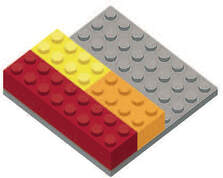 Next, take two bricks that each have 8 studs and place them next to the brick that’s already on the baseplate. It’s best if those two bricks are two different colors. You’ll use either two 2x4 bricks or two 1x8 bricks. Now the model shows 2 (bricks) x 8 (studs) = 16, and that 2 and 8 are also factors of 16. Now, here’s where the Brick Math program really becomes a powerful learning tool. For the next step, ask the student, “Are there 3 bricks that are all the same size that you can use to build the next row?” Let your students try with different bricks. They will demonstrate to themselves that there are none, so 3 can’t be a factor of 16. It’s so important that students discover for themselves while they are learning. That’s what helps them internalize what the math is all about. When they move on to looking for 4 bricks, they’ll find that four 2x2 bricks or 1x4 bricks do the trick. Now, they have 4 (bricks) x 4 (studs) = 16, so 4 is another factor of 16. 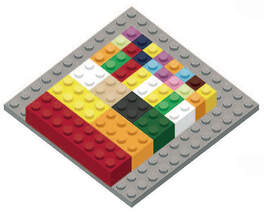 Have them look again for 5, 6, and 7 bricks that work in the model. They’ll quickly figure out that none of those numbers are factors of 16. They’ll move on to modeling eight 1x2 bricks, with the multiplication fact of 8 x 2 = 16. Finally, they can add sixteen 1x1 bricks to the model to complete all the factors with the multiplication fact of 16 x 1 = 16. When you look at the final model and count the number of bricks, the final model clearly shows the factors of 16: 1, 2, 4, 8, and 16. Dr. Shirley Disseler, developer of the Brick Math method, demonstrates this same lesson in the video below. 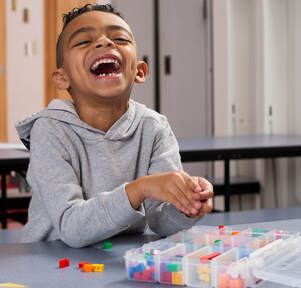 The concept of factors is key to learning multiplication, division, and fractions, so it’s in all three of the Brick Math books on those subjects: Multiplication, Division, and Basic Fractions. And it (almost) goes without saying: students have fun while they learn! If you teach math or have a student at home who is learning math, check brickmath.com. The website includes videos for both teacher training and direct instruction of students. You can learn more about how Brick Math improves student math test scores and hear what people who are using Brick Math have to say about the program.
Brick Math is a K-6 math curriculum that uses LEGO® bricks to model 11 different math subjects: Counting, Addition, Subtraction, Multiplication, Division, Basic Fractions, Basic Measurement, Fraction Multiplication, Fraction Division, Advanced Measurement and Geometry, and Decimals. It works well for math intervention, for enrichment, and as a whole-school program. Materials are simple and need not be shared between students. It adapts easily to online instruction. Contact us with any questions. 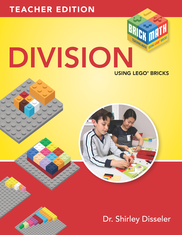 Some students who have mastered the concepts of addition and subtraction lose their way when they try to learn division. Many math textbooks don’t help students learn division. Students learn the concept of division best through the process of modeling with manipulatives. Brick Math uses manipulatives that kids love: LEGO® bricks! With Brick Math, students create models that help them understand the concepts behind division. Brick Math helps students learn division through an integrated program. The teacher uses the step-by-step lesson plan to show students each concept. Then students create brick models of the math as they learn. They draw the models they’ve created and explain in writing what the models mean. These three different ways of interacting with bricks lead to a deep understanding of division. The Brick Math Division book uses a step-by-step approach to break down these division concepts into learning modules:
Watch the video below to see a Brick Math lesson for teaching division basics. Click here for a FREE preview of the Brick Math book Division Using LEGO® Bricks—Teacher Edition. When students model the action of division using bricks, they have the opportunity to create multiple solutions to problems instead of looking for one right answer. Brick Math is fun! Students love learning math with bricks. A teacher said: “My students would rather do Brick Math than go to recess! They love it!” 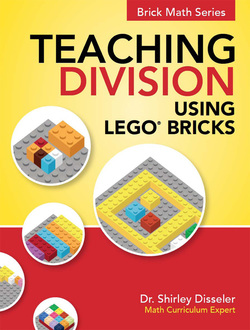 True understanding of division goes far beyond memorizing facts. Modeling the process of division with LEGO® bricks helps students visualize the math problem. Teaching Division Using LEGO® Bricks by Dr. Shirley Disseler provides a variety of modeling techniques using LEGO® bricks, allowing all students to experience that “Aha! I get it!” moment. Teachers have raved about Shirley Disseler's new series. “Hands-on, engaging, and overall an exciting way to learn math," Tina Lupton, teacher. “Breathes life back into mathematics instruction," Kelli Coons, Instructional Coach. In this book, the hands-on activities using LEGO® bricks help students learn:
|
Categories
All
Archives
July 2024
|

